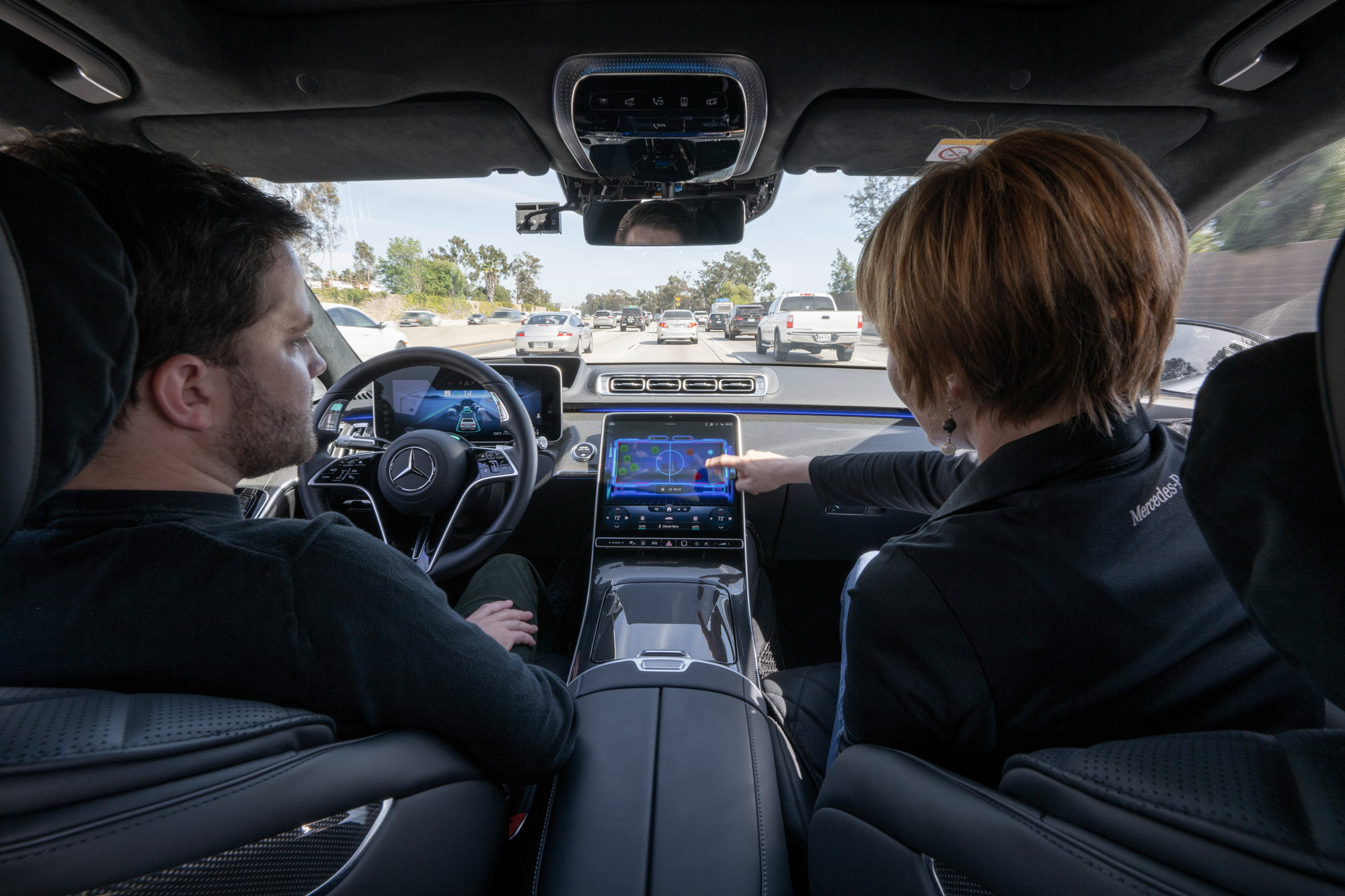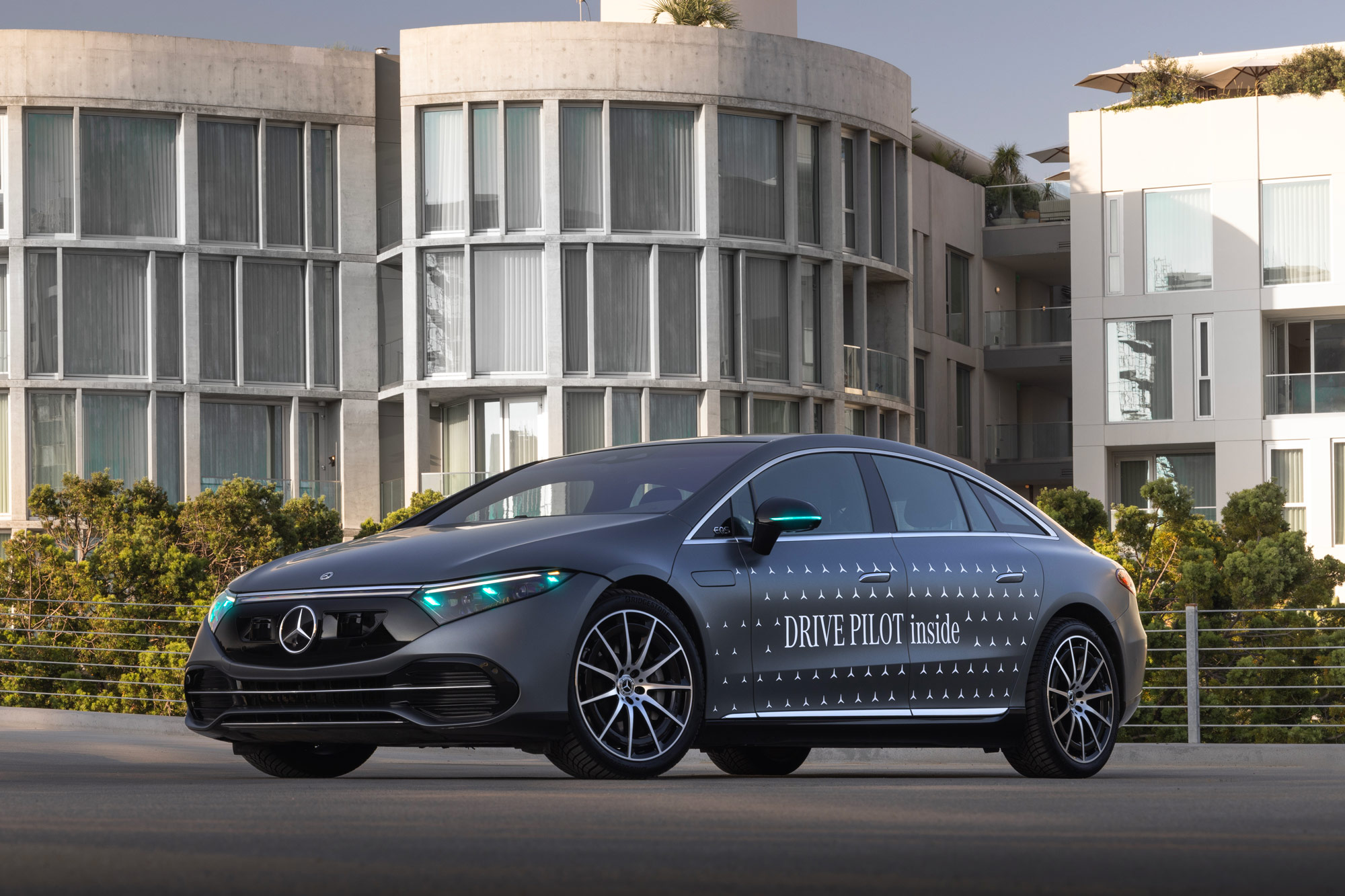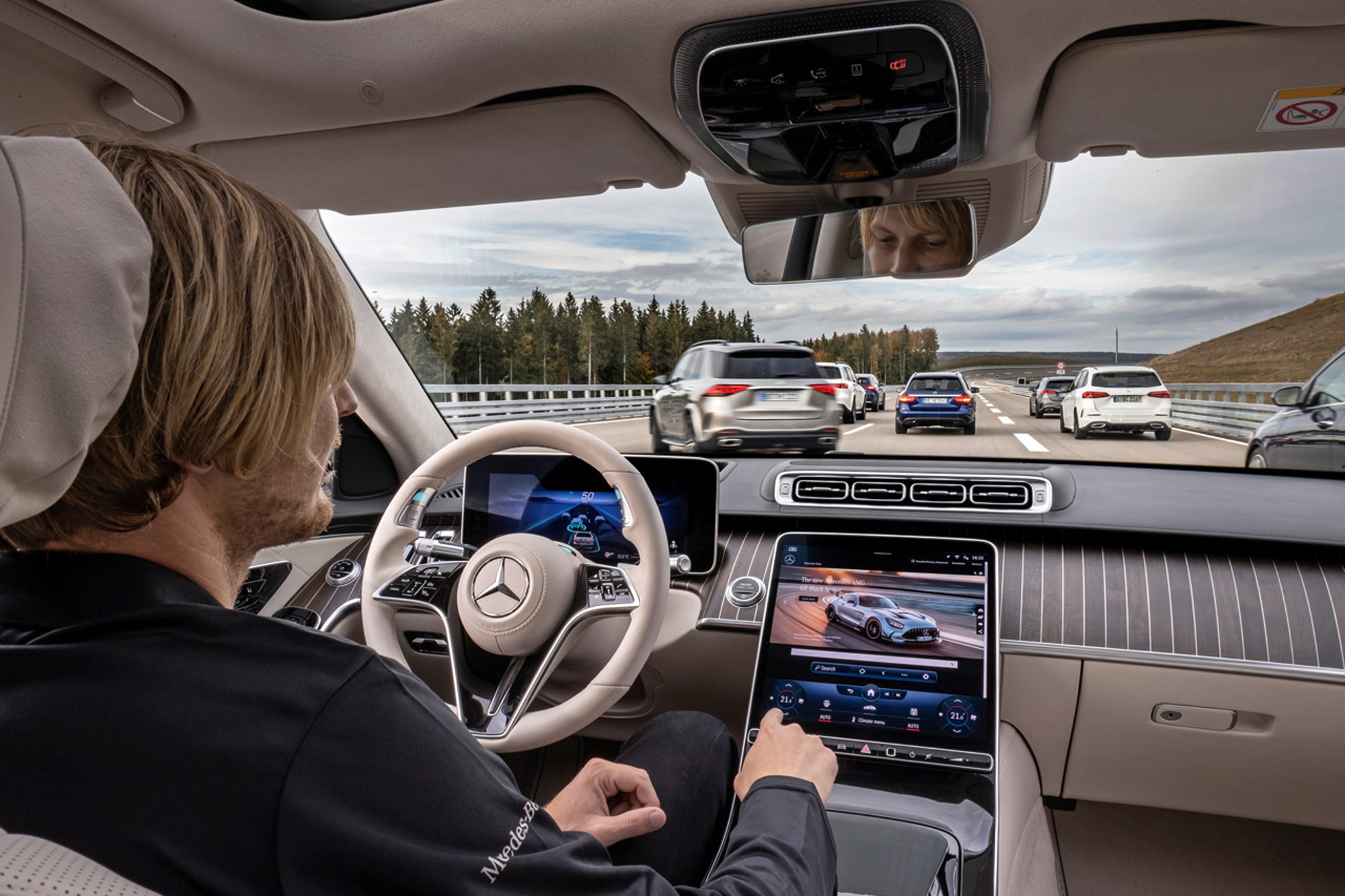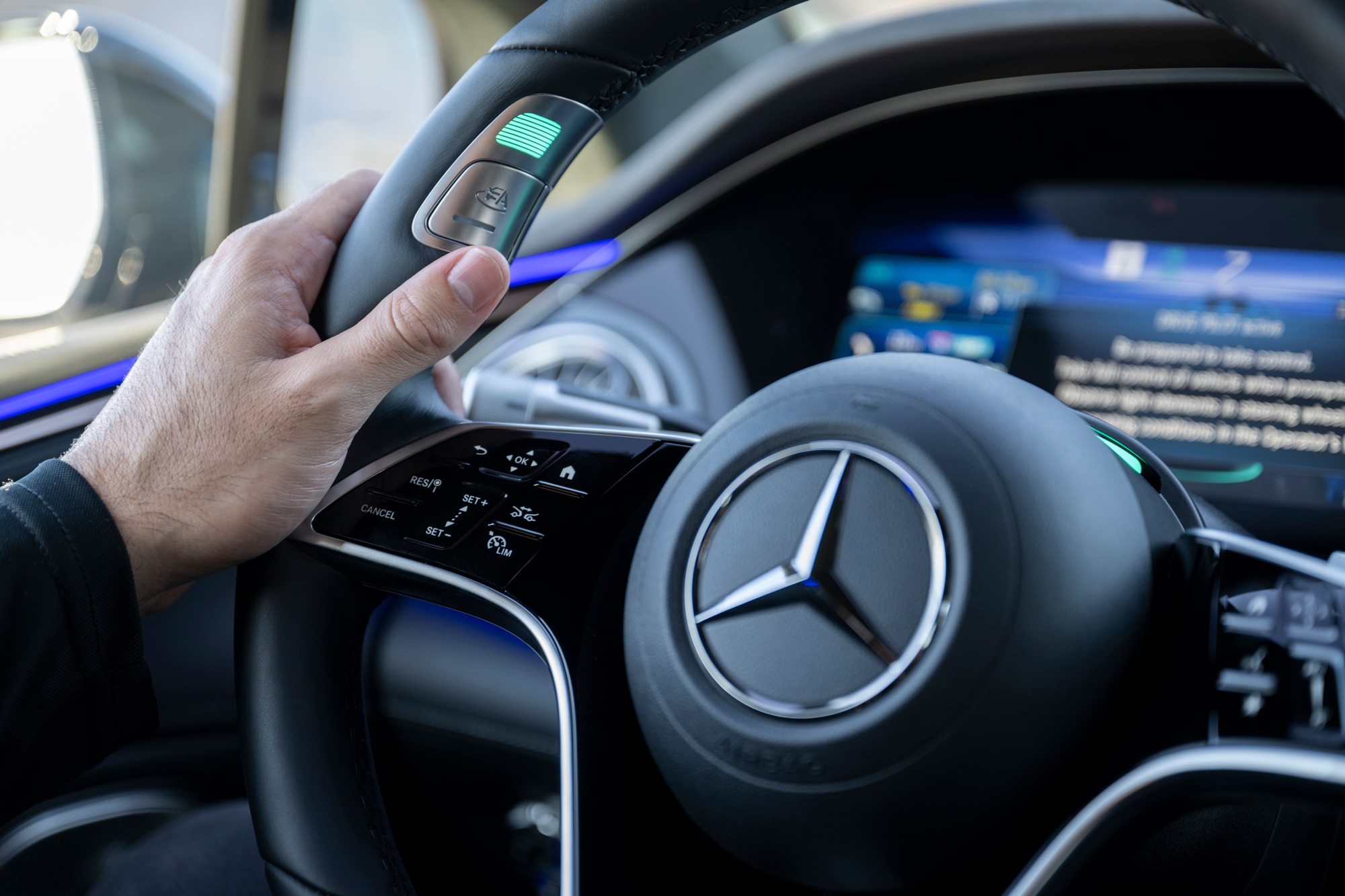What You Need to Know About Level 3 Autonomy
You can now buy a Level 3 car in the U.S. — if you live in one of two states and can afford a new Mercedes-Benz.
 Mercedes-Benz
Mercedes-Benz
Automakers have been promising fully autonomous cars for years, but only now are the technology and necessary regulations catching up. That said, not all autonomous vehicles are the same, and the first cars that let you pay attention to something other than driving — vehicles with so-called Level 3 driving automation — have limited application. They work on only a small selection of roads, and they're sold only in certain states.
 Mercedes-Benz
Mercedes-Benz
Level 3 Is a Step Toward Full Autonomy
SAE International (formerly the Society of Automotive Engineers) defines the levels of driving automation based on how much attention — from full to none — is required of the operator. Regulators and automakers use these levels to describe what vehicles are capable of.
Levels 1 and 2 require the driver to be alert at all times. Level 1, known as driver assistance, can steer to provide lane centering or it can enable adaptive cruise control, while Level 2, or partial driving automation, allows both at the same time. Hands-free systems such as Ford BlueCruise and General Motors Super Cruise fall into the Level 2 category.
Level 3, or conditional driving automation, is the step on the ladder where the driver can take their attention off the road while the car is in charge. L3 still requires the presence of a human in the driver's seat, and that human has to be ready to take over if the system requests or if there's a failure.
This conditional control is best suited for use in heavy, slow traffic on a divided highway, as it's both technically easier to accomplish at low speeds — the sensors don't have to "see" too far ahead — and a welcome tedium reducer for drivers.
Since a Level 3 vehicle will let you concentrate on other tasks — such as watching a video, playing games, or messaging on your phone — it may just be the productivity-increasing break many have been waiting for on their commutes. Automakers can also bring you entertainment options through the infotainment screen and charge extra for it.
Beyond that, there's Level 4, known as high driving automation, and Level 5, or full driving automation, where a car operating in autonomous mode won't request a human to take over. But that's years away, particularly for the consumer sector. Currently, companies are developing this technology for commercial use, such as automated taxis and trucks.
 Mercedes-Benz
Mercedes-Benz
Automated Driving Requires Lots of Sensors
To make this human-machine handover safe, the vehicle requires a lot of sensors and the computing power to back them up. It needs to know where it is in space and what's around it, just like a human driver does.
To accomplish this, automakers must add to the complement of sensors that are already available on cars today. These additions include radar to determine relative velocity; cameras to see other vehicles, objects, and lane markings; and ultrasonic sensors to detect objects, vehicles, and humans at short range.
The most popular addition is a lidar sensor, which uses static or spinning laser beams to scan the environment around the vehicle, returning a sort of topographical map of solid objects. The automated system can then consider this information, which updates multiple times a second, to make decisions and avoid crashes.
While lidar gives the vehicle a better idea of its surroundings, it needs some help to determine precisely where the vehicle is in the world. Consumer-grade GPS is accurate to about 16 feet, but considering the average width of a highway lane is 12 feet, that isn't good enough for automotive autonomy. This is where high-definition maps come in.
Automakers or their suppliers drive specially equipped vehicles on allowed roads to map them with lidar. They then store this reference data on the vehicle and update it frequently. The automated system compares this information to what it's seeing through its lidar sensors at any given moment to determine its precise location and establish the rest of its map information — things such as road signs, lane layout, and road topography.
 Mercedes-Benz
Mercedes-Benz
Mercedes Is the Only Company Offering Level 3 Vehicles in the U.S.
If you want a Level 3-capable vehicle, your options are limited. Mercedes-Benz sells two of them — its S-class flagship sedan and the EQS EV — with a Level 3 system it calls Drive Pilot. They're available with this feature only in Nevada and California. Those are the only states that have granted the company permission to sell a vehicle with Level 3 automation to the public, and the only places where Mercedes has enabled the feature on select roads.
You can't just switch Drive Pilot on anywhere or at any time. The system will offer its services in heavy traffic situations at speeds less than 40 mph. While not an end-to-end, hands-off experience, it can be a welcome stress reducer for some commuters.
In California, Mercedes enables Drive Pilot on highways in the Bay Area, the Central Valley, Los Angeles, Sacramento, and San Diego as well as the stretch of Interstate 15 between Southern California and Nevada. In the Silver State, the allowed automated driving map picks up at the California border and runs along I-15 to Las Vegas, where it also includes portions of highway in that city.
Wide Adoption of Level 3 Will Require Regulators to Catch Up
Beyond Mercedes, a few other automakers — including Ford and Volvo — have announced plans for Level 3 systems but have not launched them, in large part due to the regulatory hurdles involved. Audi announced that it would introduce such tech on its refreshed-for-2020 A8, but it gave up on that after facing several setbacks.
There is no federal law regulating automated driving systems in the U.S. yet, so certification and regulation are left up to individual states. Some have pumped the brakes on vehicular autonomy, citing safety concerns, while many others have adopted some kind of legislation related to autonomous vehicles.
Even if state legislatures were to relax their requirements, automakers would still need to get certified in those jurisdictions and map the roads there. All of this will take time — likely years. Until then, those of us without a high-end Mercedes in Nevada or California will have to keep our eyes on the road.
Written by humans.
Edited by humans.
 David Gluckman
David GluckmanDavid Gluckman has over a decade of experience as a writer and editor for print and digital automotive publications. He can parallel park a school bus, has a spreadsheet listing every vehicle he’s ever tested, and once drove a Lincoln Town Car 63 mph in reverse. When David’s not searching for the perfect used car, you can find him sampling the latest gimmicky foodstuffs that America has to offer.
Related articles
View more related articles